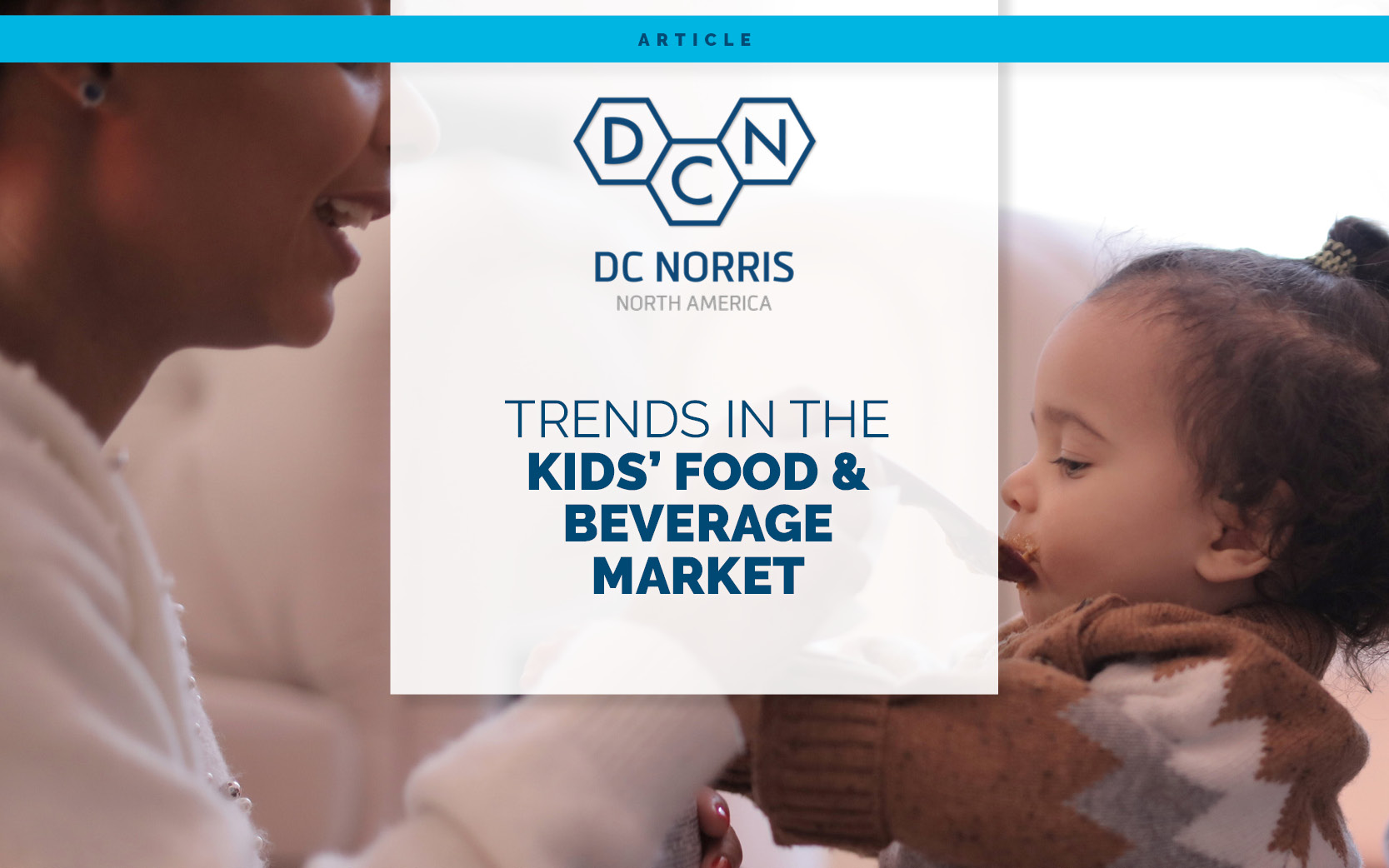Trends in the Kids’ Food & Beverage Market
In a recent study by Report Linker, it was projected that, globally, the children’s food and beverage sector will reach $147 billion by 2027. The same report shows that the U.S. market for the kids’ food and beverage sector is poised to reach $30.3 billion by 2027. Like other food-related industries, the global COVID pandemic ushered in soaring growth for the kids’ food and beverage sector as families spent unprecedented amounts of time eating at home together.
The Push For Healthy, Convenient & Enticing Options is Dominant in Childrens’ Food & Beverage
The trends driving innovation in food and beverage are typically the same trends that drive innovation in the kids’ category. Parents are prioritizing healthy choices for their children, as they are for themselves, but are more time-starved than ever. This time famine is pushing brands in the category to develop convenient meal and snack choices for children that don’t compromise nutritional quality. But there’s an added caveat in the category: appeal. Kids want fun and familiarity and have a remarkable influence on the weekly grocery haul. Innovative, responsive brands in the sector have begun to master the art of blending health, convenience, and kid appeal because parents are far more likely to buy products their children request and like.
Making a Swing Towards Savory from the Start
Parents have been making more health-conscious food choices for their children when it comes to sugar for a while now. Seeking out products with lower sugar or no added sugar is a trend that has been increasing since the recommendation to consume less than 10% of energy per day from added sugars appeared in the 2015 US Dietary Guidelines for Americans (DGA).
One of the easiest ways to make a shift in added sugar consumption for kids is to introduce a greater variety of savory, vegetable-forward foods. Of course, ask any parent and they’ll tell you that this is only the ‘easiest’ way to make that shift if kids are given the chance to develop a savory, vegetable-forward palette from the start. While research is showing that introducing fruits before savory choices in itself doesn’t create a preference for the former, it does show that the timing of introducing a variety of foods does matter. On foodnavigatorusa.com, Tiny Organics Co-Founder, Betsy Fore states that the age of 4 to 7 months is the time in a child’s life when they’re much more likely to try new flavors. Fore refers to it as the “flavor window” and also states that research has shown that after 8 months old, it becomes much more difficult to introduce new flavors. Tiny Organics recently launched a new Tiny Beginnings line, targeted to 4 – 7-month-olds, featuring a clean ingredient profile of just 3 ingredients, 80% of which are vegetables. The company is also partnered with Veggies Early and Often, Partnership for a Healthier America to “help improve the food landscape for the nation’s youngest eaters through a veggie-forward approach.”
Subscription & DTC Models Come to Kids Food & Beverage
The direct-to-consumer model has been trending in food and beverage, with an uptick in sales due to the pandemic. More recently, there has been a host of DTC lines aimed at babies and kids. Companies like Yumi, Little Spoon, and Nurture Life are disrupting the traditional retailer model to get healthy, convenient meals and snacks into the hands of busy households. These businesses are ensuring that choosing healthy foods for kids no longer has to mean compromising convenience for parents.
We’re Here to Help You Produce Fresh, Convenient Choices for the Kids’ Food & Beverage Market
Whether you’re searching for retorts and sterilizers, a cook-chill system, industrial or commercial sous vide equipment, or the fastest cooking and mixing system on the market today (Jet Cook) – DC Norris North America is here to help you produce the best products for the kids’ food and beverage sector. Our experts are on hand to help you explore the equipment and systems that best fit your needs. Request a callback today.



